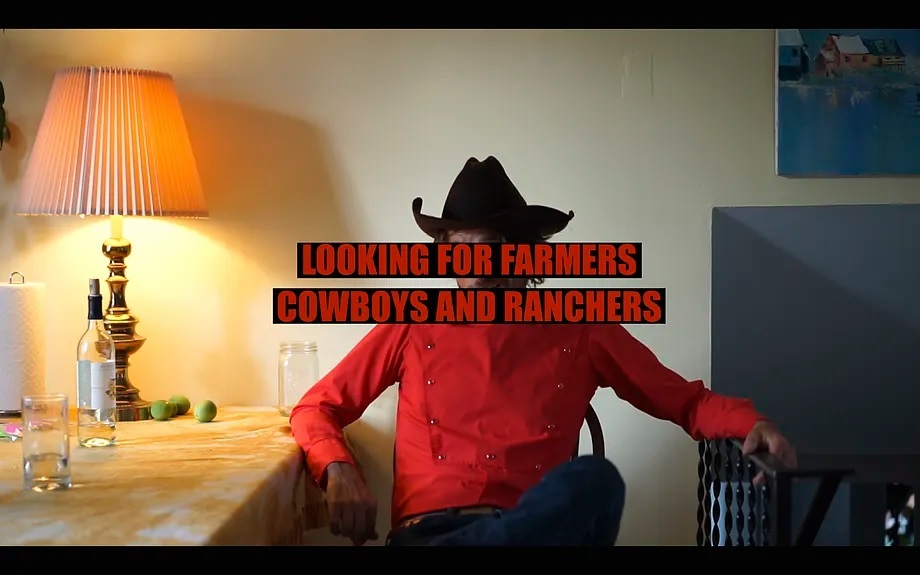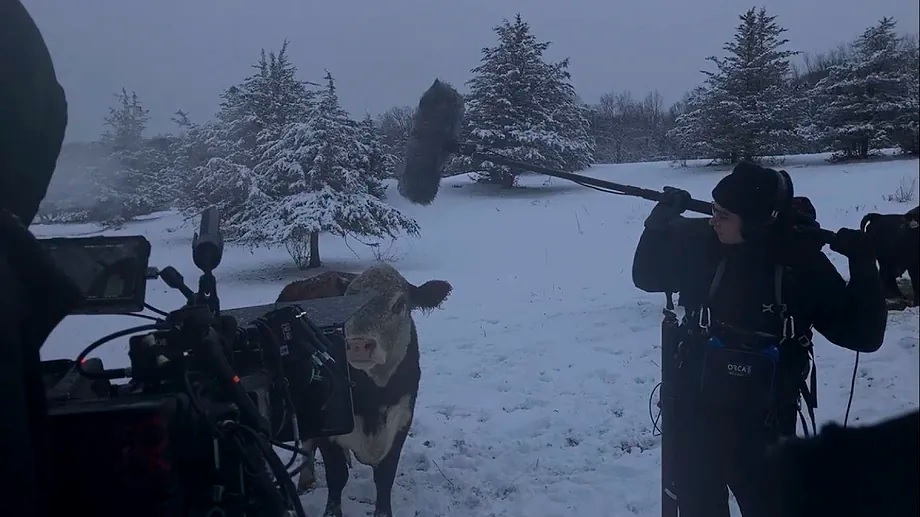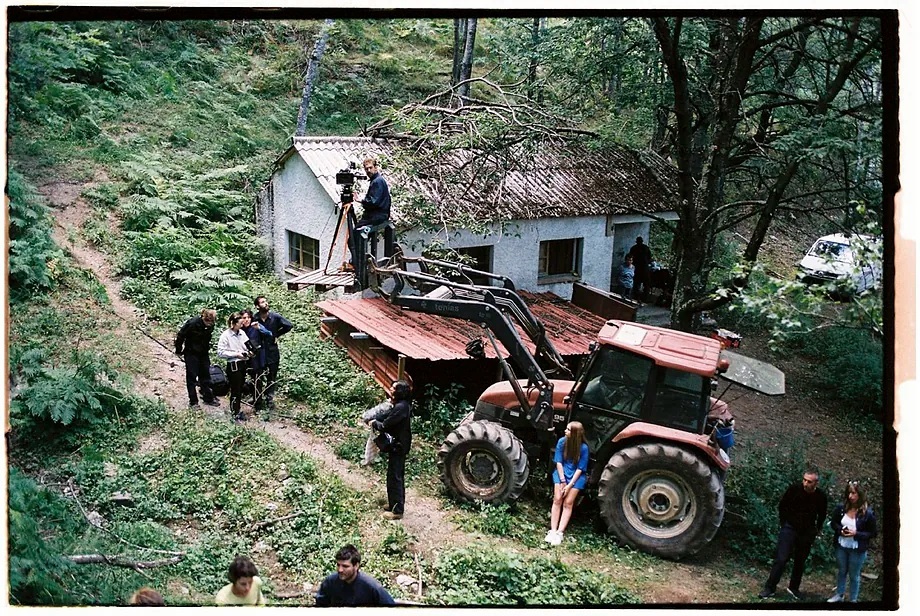Perhaps sleep, beyond any reasonable explanation, is nothing more than the mechanism devised by the body to make the frustrating rigor of wakefulness bearable. Or perhaps, conversely, the hours we spend awake are the devastating and even cruel experience our bodies need to appreciate the value of freedom and the pleasure of living asleep. Anna Cornudella (Barcelona, 1991) is more curious than sleepy. One day, while strolling through New York, she was puzzled by the absence of squirrels. This filmmaker, who was once an artist without a surname, was surprised by her own surprise. A plague? A warning of the first of all extinctions to come? Everything was simpler and yet more mysterious. The squirrels, at least some of them, hibernate. That is, if they were conscious, they would believe, like the men of Spanish Baroque, that life, or part of it, is a dream and dreams... are what they are. "Later," she recalls, "I read an article explaining how a certain Australian porcupine survived environmental catastrophes by learning to hibernate. That is, its adaptation mechanism consisted of sleeping while the worst was happening outside." Thus, between squirrels and porcupines, was born the most surprising film of the year, blending fiction and documentary. Just awarded at the Feroz Awards with the Non-Fiction Arrebato, The Human Hibernation reconstructs a universe somewhat dystopian, somewhat dreamlike, and always fascinating in which humans learn to hibernate. Like Calderón's Segismundo, but in prose.
It all began in 2018 when the initial idea turned into a project with the possibility of an artistic research grant. The following year, Cornudella, naturally daring, wrote to the CEO of Space Works Enterprises, Inc., named John Bradford. She told him about what was already, in fact, her dream. The man initially showed indifference, only to then transform his drowsy laziness into enthusiasm. To the point of putting her in touch with several scientists. From that meeting, she deduced, among many other things, an invitation to the lemur research center at Duke University in North Carolina. Lemurs are the only primates (primates like us) that spend the winter asleep.
The next step was to find neurophysiology doctor Matteo Cerri, who accompanied her throughout the research, and from there, everything else fell into place. "One of the first questions that arose was how the disappearance of the largest predator for a season would affect the habits of other species," comments the director, takes a moment, and continues: "Everything changed shortly after during the pandemic. The film was about winter sleep, and precisely we found ourselves locked in our homes. Not asleep, but almost. Suddenly, layers were added with the scientific and religious narratives we construct about the world, death...". And there, amidst rewrites, research, and reconsiderations, everything grew.
What followed was the construction of the film itself from the image, not the paper. The first step, between September 2021 and January 2022, was an online casting in search of cowboys. "Cowboys, to be precise," Cornudella recalls. "We still didn't know where we were going to shoot. We used Facebook to find our characters and with what we found, we devised a plan." The plan was to drive from New York to South Dakota in a rented car in search of farms and the essence of the film. "We would arrive and knock on doors unannounced. The reaction could be very hostile. We would knock and run to the exact limit of the shooting range. But we also had surprises of extreme hospitality," she says.
The process involved recording conversations "about the world, about what they thought, about their lives." "Very attentive," she says, "to the stories that emerged. We didn't tell them about hibernation. We insisted it was a documentary about their cowboy life. Our idea was always to collect those stories and incorporate them into ours in a back-and-forth journey where fiction drew from reality, and vice versa. Always rewriting everything." Always between the dream of fabulation and the wakefulness of the other.
Thus, Cornudella and her team came across Bob, who lived in a caravan taking care of goats, especially those rejected by their mothers. "In truth, that was his own childhood story." Until one day, he disappeared. "We found out he had ended up in jail. We searched for him in all the prisons until we found him. He was in a very difficult situation, and we had to abandon the idea of working with him." Bob was followed by Brian Stevens, a rodeo cowboy with a broken back convinced he could communicate with his ancestors. "He told us the story of an incredible moment in his life when he saw a group of completely still horses. They were keeping vigil over the body of one of their own. Their stories led us to delve into mourning." And with them, the protagonist Clara, found in a town in the Hudson Valley, who, according to her mother, could communicate with chickens. "She is the one who acts the most. She said she didn't know how to scream, and we learned to scream together...," Cornudella reminisces, leaving fragments of the dream in which she lives from beginning to end the wonder that is The Human Hibernation; a story that begins with the girl, a human girl who wakes up prematurely. Everyone is still asleep, except her, who comes face to face for the first time in her life with the pure whiteness of the snow. With that and with the possibility of a virgin world without rules and without adults. "We filmed in three expeditions... We filmed with the first light and with the last light of the day...".
The film invents myths (not approaching ponds, not touching cows) and destroys them. And in reimagining another reality from a different perspective, it ends up questioning this reality from any of the trenches one can imagine. And all because of a squirrel that dreamed, that dreamed dreams, dreams that are dreams.
PROJECT PHASES
1. STUDY. In 2019, the director visits Duke University and films in northern New York.
2. CASTING. In 2021, she places ads on Facebook (A) looking for farmers.
3. INTERVIEWS. In January 2022, the director and her team traveled from New York to South Dakota.
4. FILMING. In 3 expeditions (B) in the US and two in Catalonia (C), the filming was completed.
5. PREMIERE. In February 2024, the film is presented and awarded at the Berlinale.


